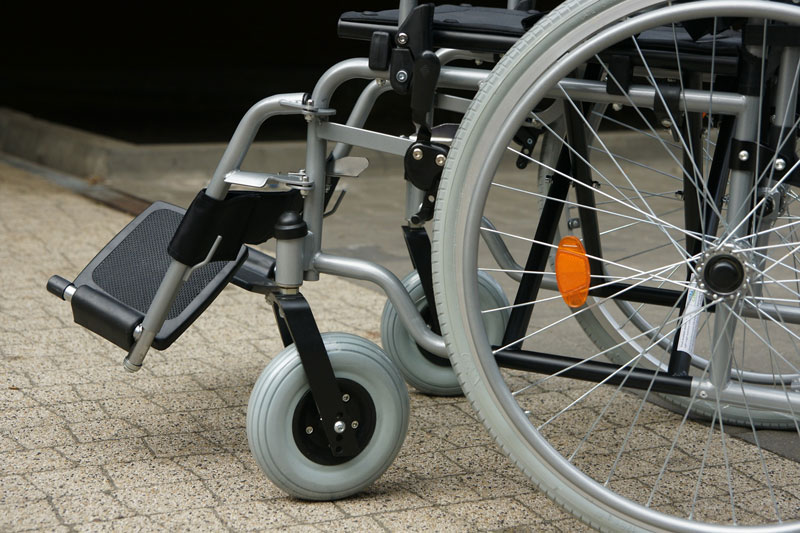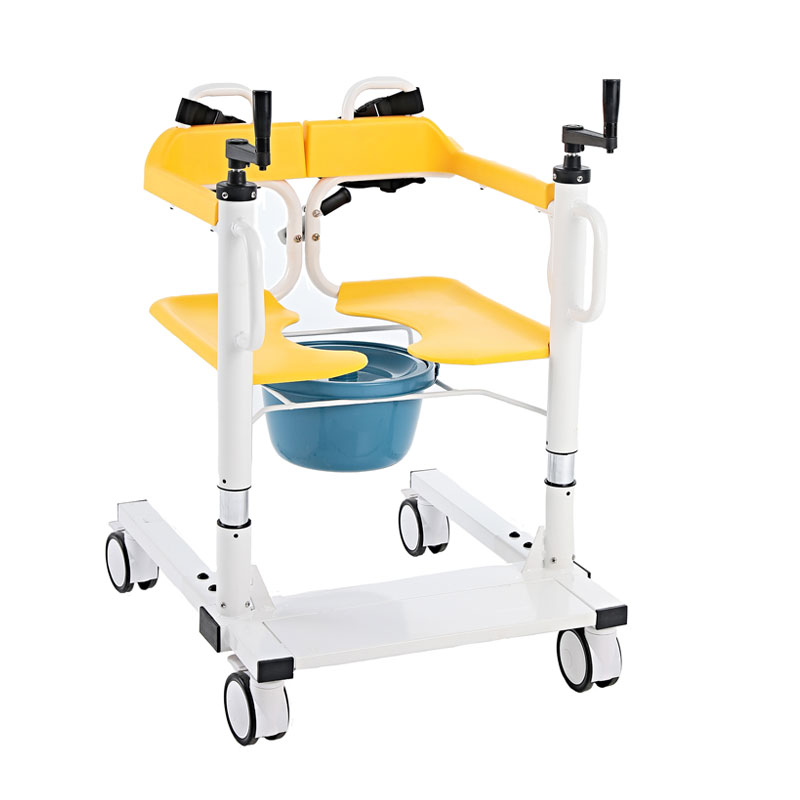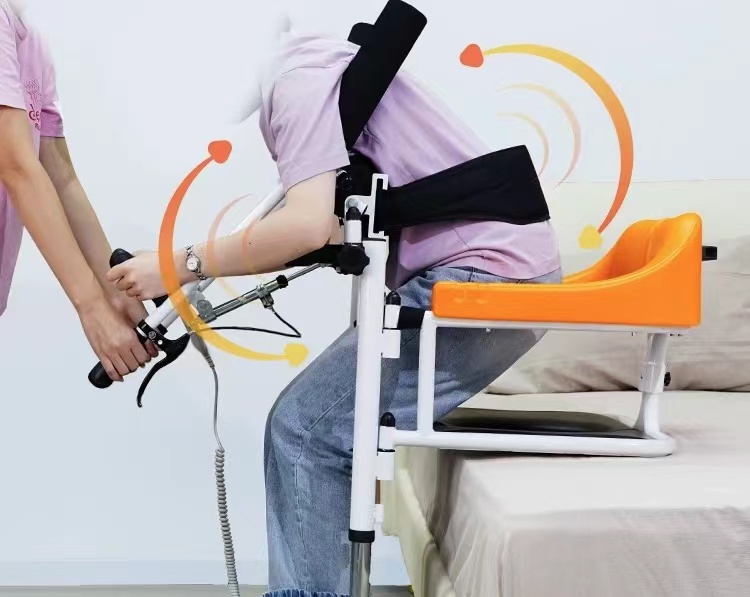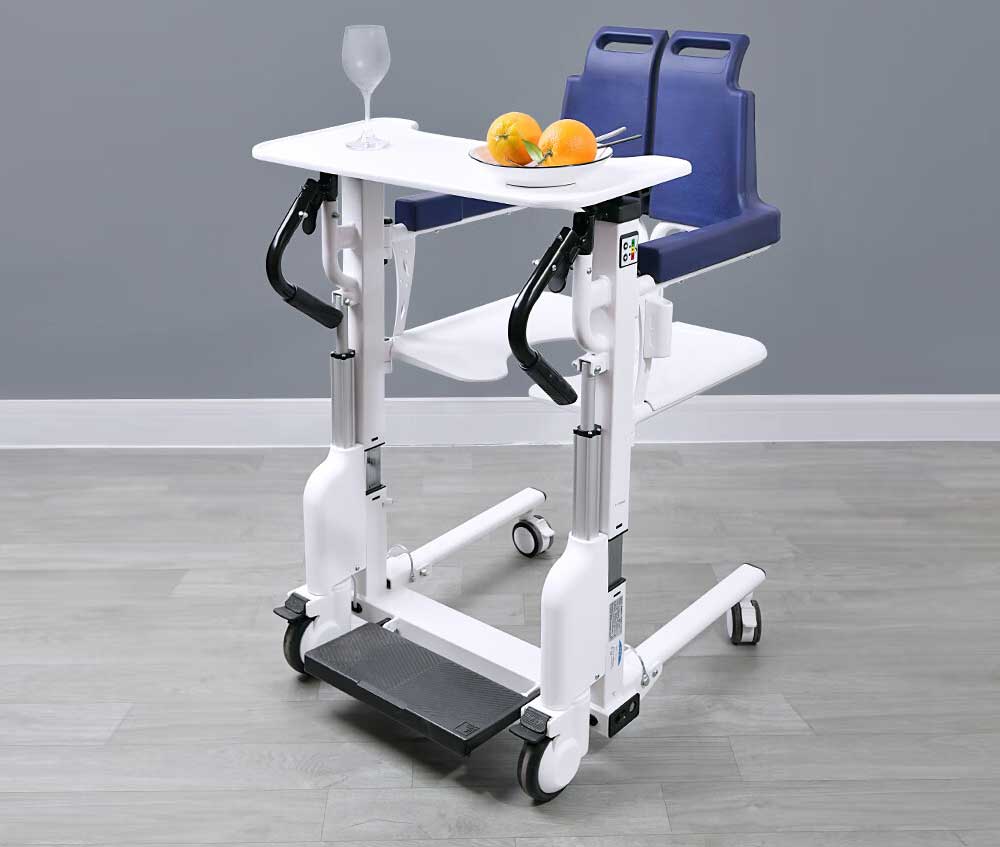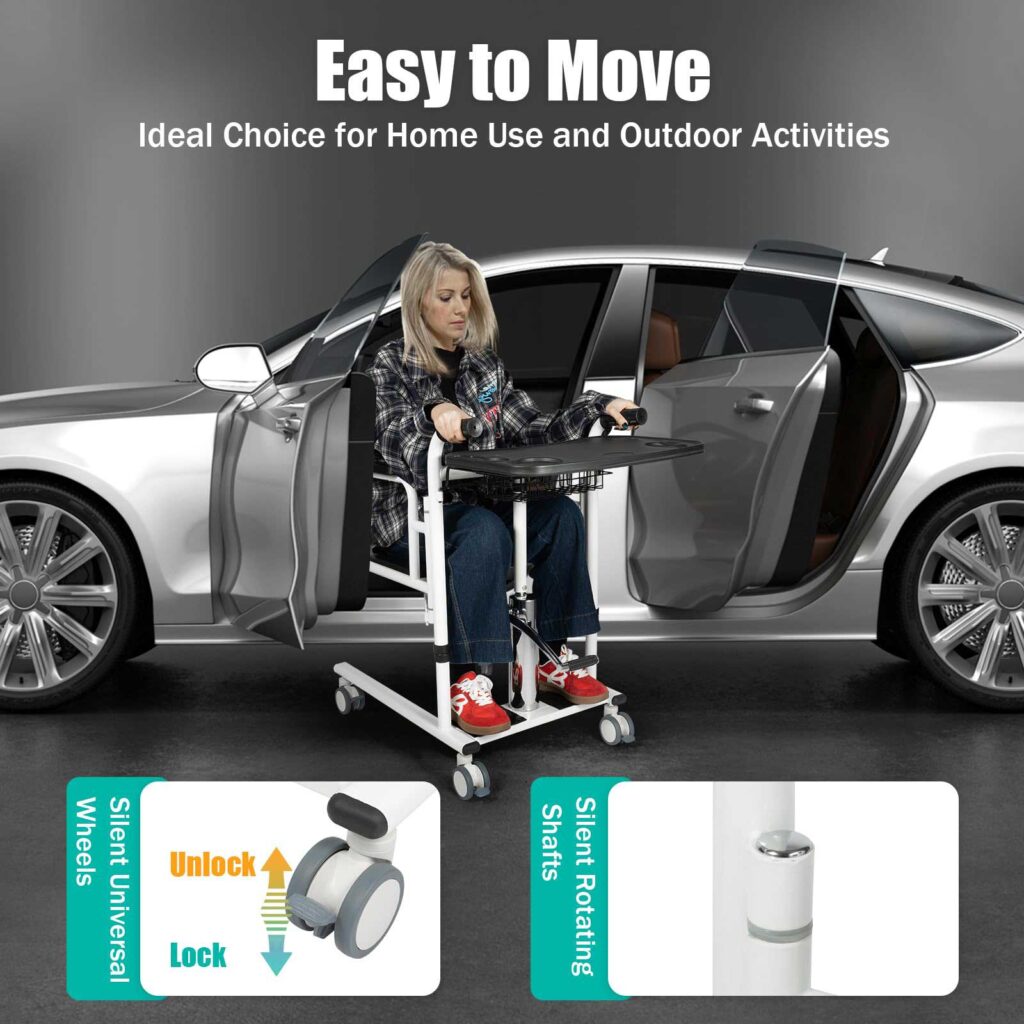A manual transfer chair is a specialized mobility aid designed to assist elderly and disabled individuals who need help moving from one position to another. These chairs are operated manually by caregivers who use their physical strength to push, adjust, and position the chair for patients.
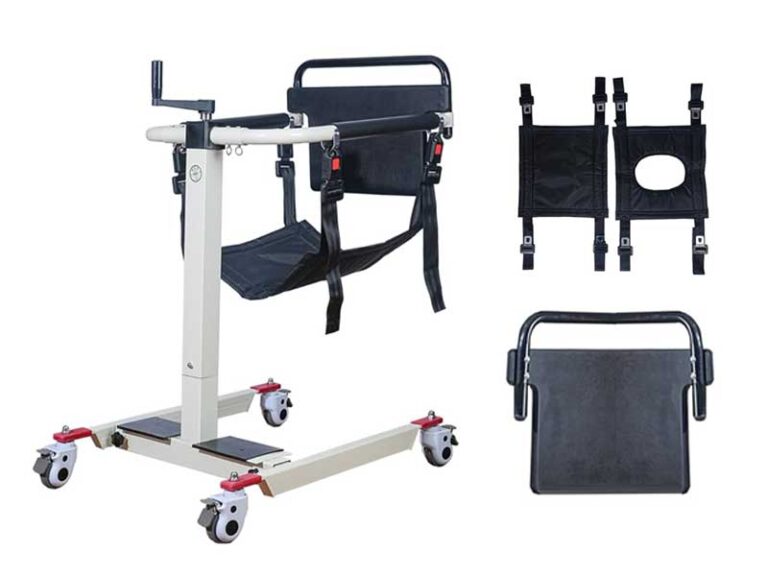
Manual Transfer Chair Operation Method
Caregivers operate the manual transfer chair using physical strength
Caregivers play a crucial role in assisting individuals who rely on manual transfer chairs for mobility and positioning.
In this context, caregivers manually operate the transfer chair using their physical strength, ensuring that the user is comfortably positioned and safely moved as needed. This task demands not only physical effort but also attentiveness to the needs and comfort of the individual being assisted.
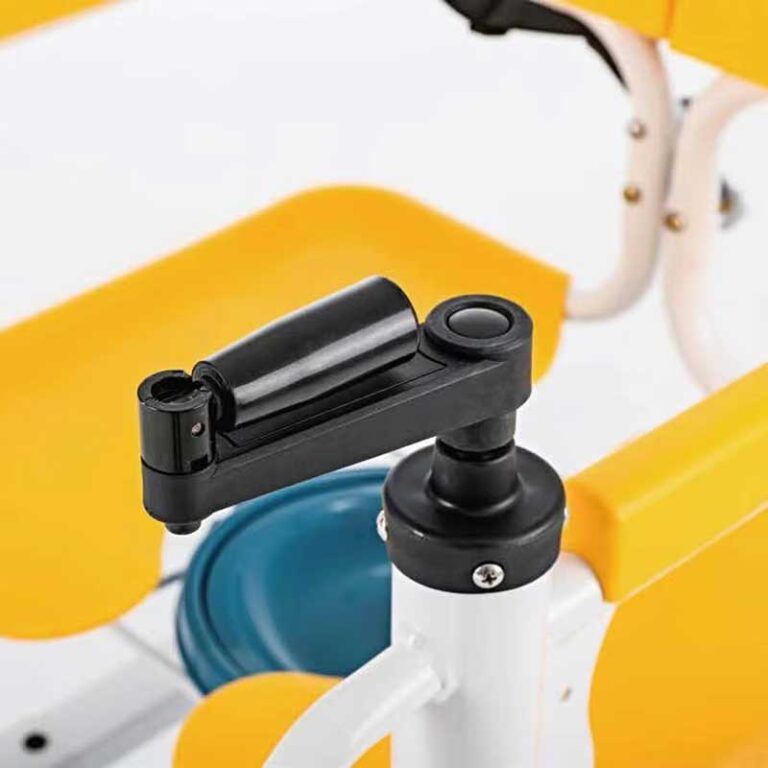
Features two joysticks and rotated to adjust height
The manual transfer chair is designed with two joysticks that can be rotated to adjust the height on both sides simultaneously. This feature allows for more precise control over the positioning of the user, making it easier to achieve the desired height and angle.
Requires caregiver assistance for all movements and positioning
However, manual transfer chair is important to note that all movements and positioning require the assistance of a caregiver. This means that the caregiver must be trained to use the equipment effectively and safely, understanding how to use the joysticks to achieve the best outcomes for the user.
In practical terms, this setup might involve a variety of scenarios where the caregiver’s involvement is essential.
For instance, when transferring the user from the chair to a bed or another piece of equipment, the caregiver must carefully coordinate the use of the manual transfer chair joysticks to ensure a smooth transition.
Similarly, during daily activities such as meals or personal care, the caregiver will need to adjust the manual transfer chair’s position multiple times to accommodate different tasks.
It is worth mentioning that while this system provides flexibility in terms of height adjustment, it may present challenges for caregivers, especially if they are required to perform these tasks repeatedly throughout the day. So, an electric transfer chair might be a better choice.
Additionally, ongoing training and support for caregivers can enhance their ability to use the equipment efficiently and maintain the well-being of both the caregiver and the user.
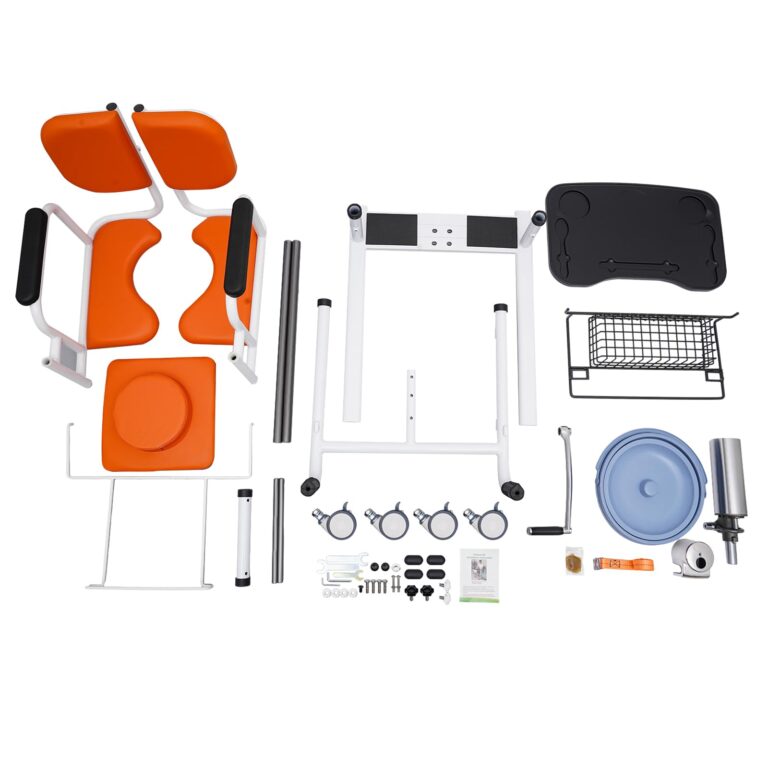
Manual Transfer Chair Structural Design
The manual transfer chair is the most stable and durable product in the transfer chair series. Due to its simple maintenance, high operational stability, reasonable price and safety, it is a frequently used mobility aids in hospitals and home care at present.
Manual Transfer Chair Built with lightweight materials for easier movement
The manual Transfer Chair is an innovative mmobility aid designed to assist individuals with mobility challenges, offering both functionality and convenience. Built using lightweight materials such as aluminum or high-strength plastics and steels, this chair ensures ease of movement for caregivers and users alike. Its reduced weight also makes it effortless to transport from one location to another and simplifies storage when not in use.
Manual Transfer Chair has Simple mechanical structure that's easy to maintain and less prone to damage
One of the standout features of the Manual Transfer Chair is its simple mechanical structure. This design choice not only reduces the likelihood of mechanical failures but also makes routine maintenance straightforward. Users can easily perform basic maintaining without needing specialized tools or skills, which enhances the longevity and reliability of the chair.
In addition to being durable and easy to maintain, the Manual Transfer Chair boasts a compact design that fits seamlessly into home environments where space may be limited.

Manual Transfer Chair has Compact design suitable for home environments and limited spaces
Whether placed in a small apartment or a modestly sized bathroom, the chair’s dimensions ensure it does not obstruct pathways or take up excessive room. Some models even come with a foldable feature, allowing them to collapse into a flat form for more convenient storage when they are not needed. This added flexibility makes the Manual Transfer Chair an ideal choice for households seeking practicality and efficiency in their assistive devices.
Overall, the combination of lightweight construction, minimalistic mechanics, and space-saving design makes the Manual Transfer Chair a reliable option for enhancing mobility while maintaining comfort and convenience.
Key Features of manual transfer chair
A manual transfer chair is a mobility aid designed to assist individuals with limited mobility in transferring from one place to another safely and comfortably.
These chairs are particularly beneficial for people who have difficulty standing or walking for extended periods, such as those recovering from surgery, elderly individuals, or people with certain physical disabilities.
Here are the key features of a manual transfer chair that make it an essential tool for enhancing mobility and independence:
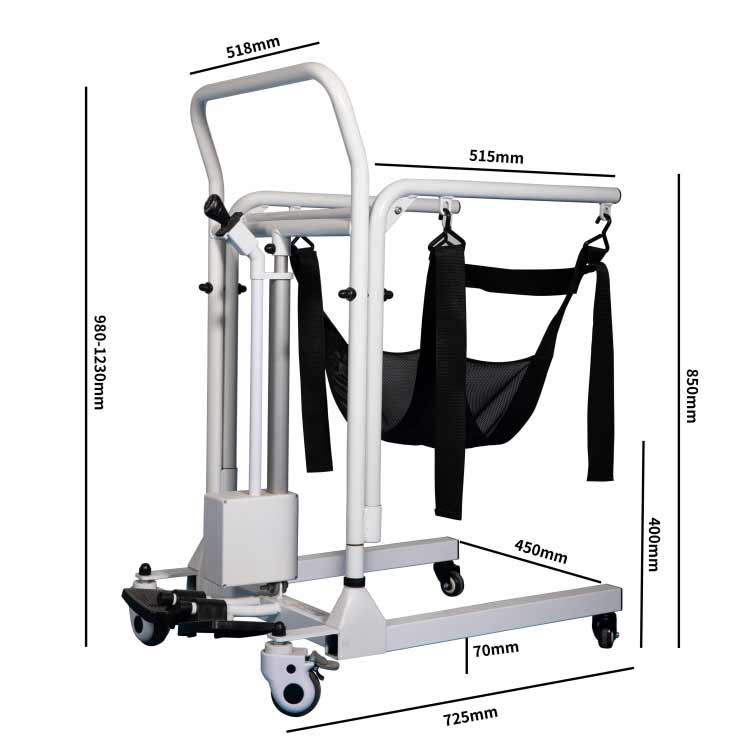
Adjustable seat height for comfort and transfer requirements
The manual transfer chair is specifically designed to enhance comfort, convenience, and safety during transfers for individuals who require assistance with mobility. One of its key features is the adjustable seat height, which can be customized to meet the specific needs of both the user and the caregiver.
This flexibility ensures that the manual transfer chair can be positioned at an optimal height for transferring in and out of beds, cars, or other seating arrangements, reducing strain on both the user and the assisting person.
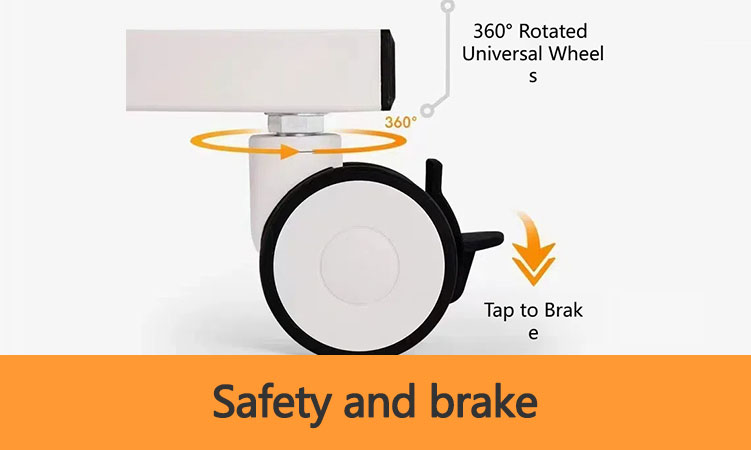
360° swivel wheels for smooth maneuvering in tight spaces
In addition to the adjustable seat height, the manual transfer chair is equipped with 360-degree swivel wheels. These wheels allow for smooth and effortless maneuvering, even in tight spaces such as small bathrooms or crowded rooms. The ability to rotate fully in any direction makes it easier to navigate through doorways, around furniture, and into confined areas without requiring excessive force or effort.
This feature not only improves the overall usability of the chair but also enhances the safety of the transfer process by minimizing the risk of accidents caused by awkward positioning or difficult handling.
The combination of these features makes the manual transfer chair a practical and reliable solution for those needing assistance with mobility. Whether used in a home environment or a healthcare facility, the transfer chair’s design prioritizes ease of use, adaptability, and user comfort, ensuring that transfers are as seamless and stress-free as possible.
The manual transfer chair is a specialized mobility aid designed to assist caregivers in safely transferring patients from one location to another, such as from a bed to a wheelchair or bathroom. This type of chair incorporates several key features that enhance both the safety and comfort of the patient while also reducing strain on the caregiver.
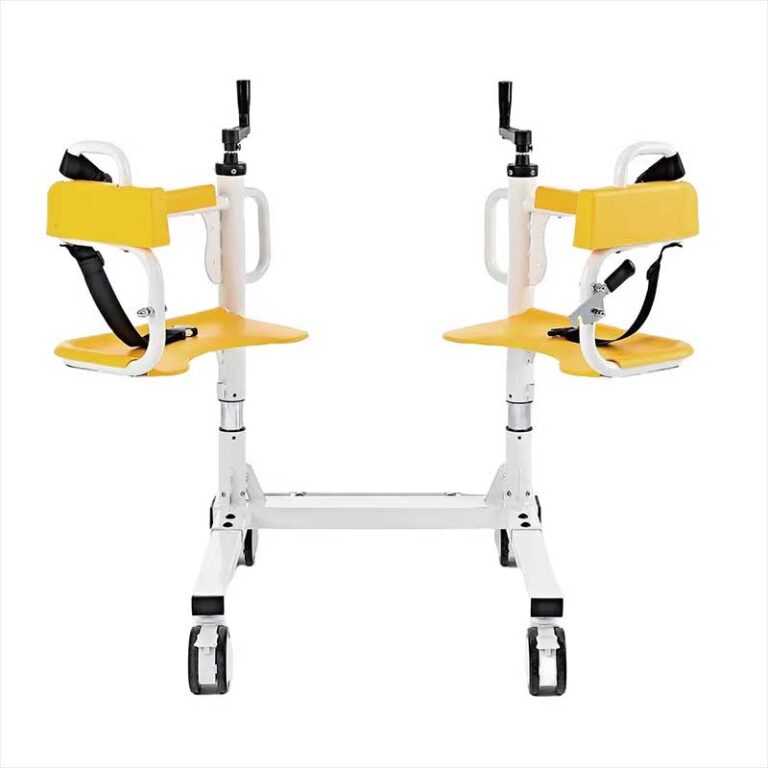
Split seat design for toileting purposes
One of the most notable features of the manual transfer chair is its split seat design, which typically allows for a 180° opening. This innovative feature is particularly beneficial when assisting patients with toileting needs.
By splitting the seat, the manual transfer chair can be positioned directly over a toilet, eliminating the need for the patient to stand or bear weight during the transfer process. This not only increases convenience but also minimizes the risk of falls or injuries.
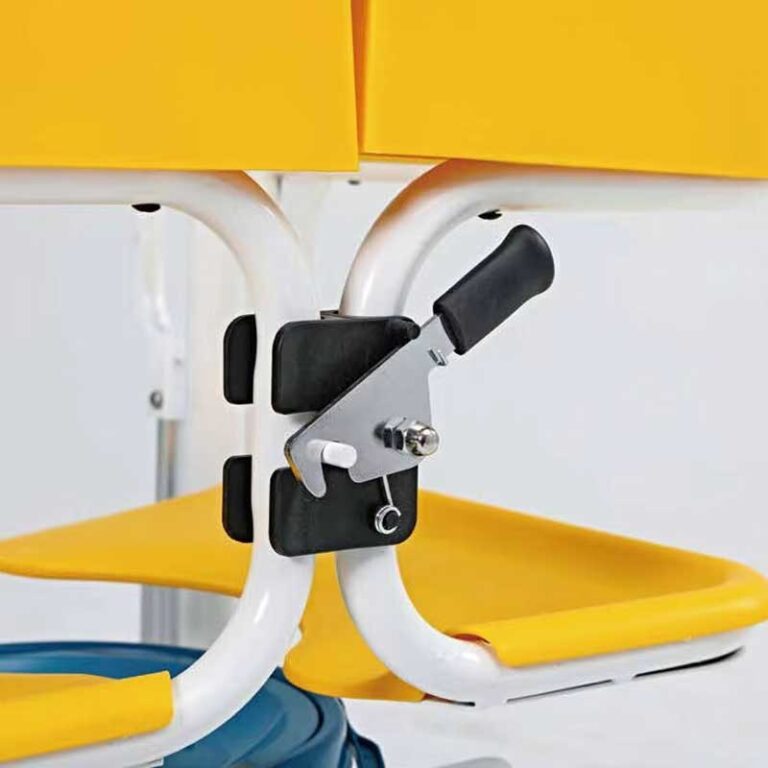
Safety straps and locks to ensure patient security during transfers
Safety is a top priority in the design of these manual transfer chairs, and they are equipped with safety straps and locks to ensure secure transfers.
The safety straps help stabilize the patient during movement, preventing them from slipping or falling out of the chair.
Additionally, the locks on the wheels provide stability by keeping the chair firmly in place while the patient is being transferred. These mechanisms give both the caregiver and the patient peace of mind, knowing that every precaution has been taken to prevent accidents.
Ergonomic design for both patient comfort and caregiver ease of use

Another important aspect of the manual transfer chair is its ergonomic design. Ergonomics plays a crucial role in enhancing both patient comfort and caregiver ease of use.
For patients, the manual transfer chair is designed to support proper posture and reduce pressure points, making it more comfortable during prolonged use. Also, the chair offers adjustable components such as armrests, footrests, and back support, ensuring that they remain comfortable throughout the process.
For caregivers, the ergonomic design reduces the physical effort required to operate the chair, minimizing the risk of back strain or other injuries associated with repetitive lifting tasks.
Other features of a manual transfer chair, such as adjustable armrests, padded seating, and smooth-rolling wheels contribute to the overall usability of the chair, these adjustments cater to different body sizes and specific needs, minimizing discomfort or pressure points.
All the elements like easy-to-grip handles, lightweight materials, and sometimes wheels that allow for smooth movement across various surfaces. This reduces the physical burden on caregivers, decreasing the risk of injury from repetitive or strenuous movements.
Overall, the combination of these manual transfer chair thoughtful design elements ensures that the manual transfer chair not only enhances the quality of life for patients but also supports caregivers in performing their duties more effectively and safely.
Importance for individuals with mobility challenges
Manual transfer chairs play a crucial role in enhancing the quality of life for individuals with mobility challenges, offering both medical and practical benefits in care settings.
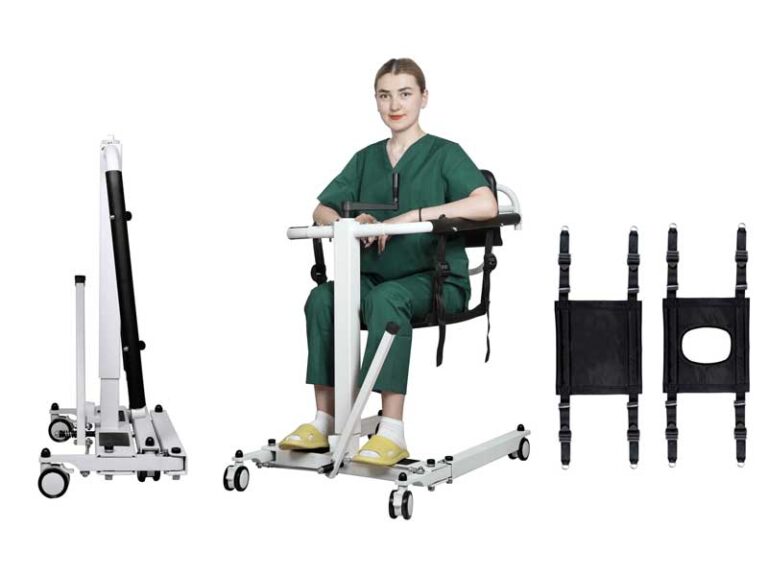
For hospitals and rehabilitation centers
In hospitals and rehabilitation centers, these manual transfer chairs facilitate safe and efficient patient transfers, reducing the risk of falls and caregiver strain while promoting early mobility for post-surgery or injury recovery.
Caregivers often find themselves in situations where they need to manually operate a manual transfer chair using their physical strength. This task can be quite demanding. however, it provides stability for patients during movement, avoiding the potentially fatal risks of falls, collisions, etc.
Manual transfer chairs are commonly used in healthcare facilities, rehabilitation centers, and home care settings, making them an essential tool for improving mobility and independence.
Manual transfer chair helps caregivers to exert less effort to transfer the bariatric people easily, especially when assisting individuals who cannot move on their own.
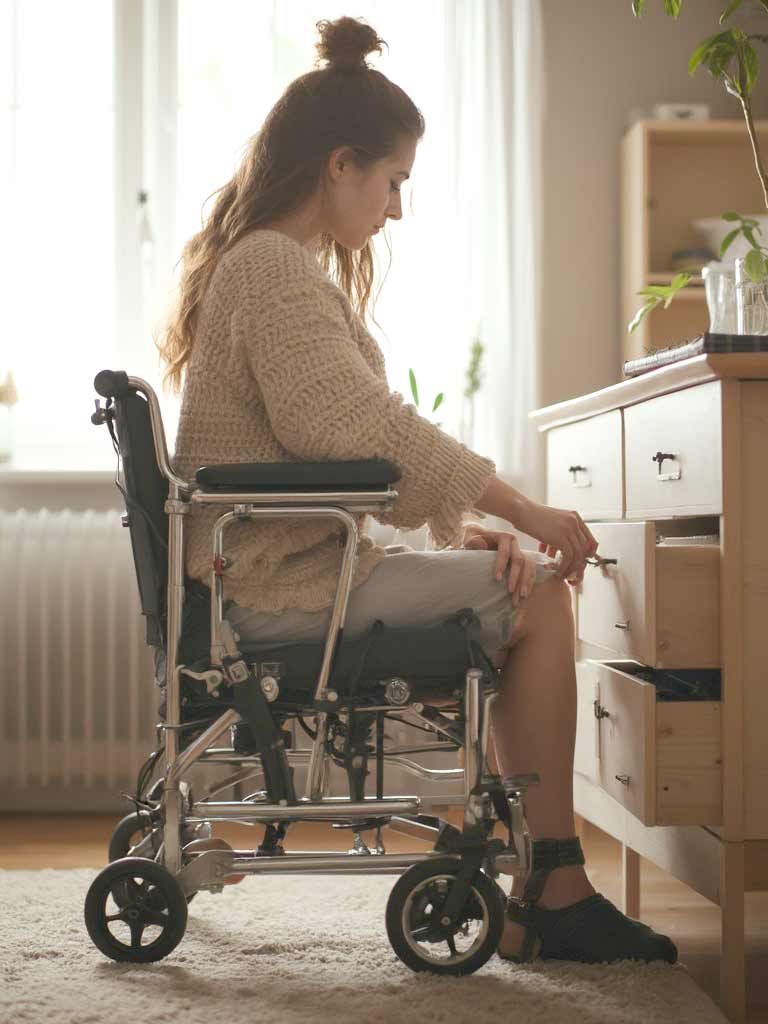
For home
At home, manual transfer chairs provide a cost-effective and space-saving solution, enabling seniors or disabled individuals to move comfortably between rooms, beds, or vehicles without relying on bulky wheelchairs. Their lightweight, foldable design makes them ideal for family caregivers who need a mobility aid for daily assistance.
By improving independence and reducing physical strain, manual transfer chairs bridge the gap between medical necessity and everyday convenience, ensuring dignity and ease life for users while simplifying caregiving tasks.
Primary Uses for Manual transfer chairs
Manual transfer chairs serve a vital role in enhancing mobility and independence for individuals who require assistance with movement. These chairs are commonly utilized for several primary purposes, each designed to address specific needs related to mobility and accessibility.

Bed to Wheelchair Transfers
One of the most common applications of manual transfer chairs is facilitating smooth transitions between a bed and a wheelchair. This process can be challenging for both caregivers and individuals requiring assistance.
Manual transfer chairs are engineered with features such as swivel seats, adjustable arms, and lightweight frames to make this movement easier.
For instance, a caregiver can position the chair close to the bed, adjust its height to match the bed level, and help the individual pivot safely into the wheelchair.
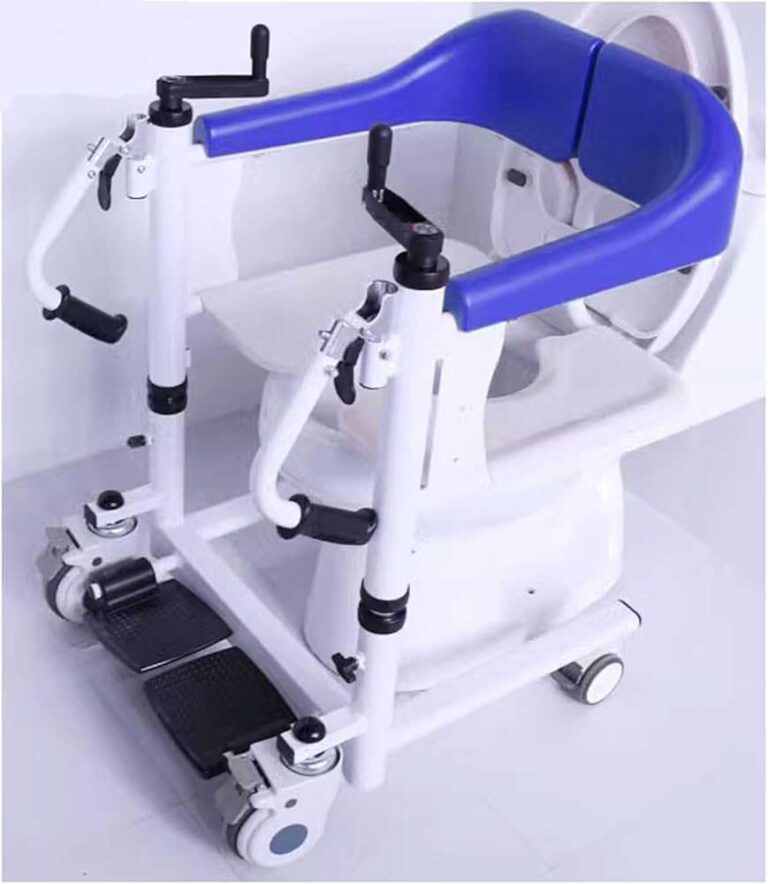
Toilet Transfers
Many models of manual transfer chairs come equipped with commode functionality, making them invaluable for bathroom routines.
These chairs often feature removable or hinged arms and legs, allowing users to slide closer to the toilet seat without obstruction. Some designs also include a drop-in commode pail, enabling the chair to function as a portable toilet when regular access to a bathroom is not feasible. This dual-purpose design enhances convenience and independence for users.
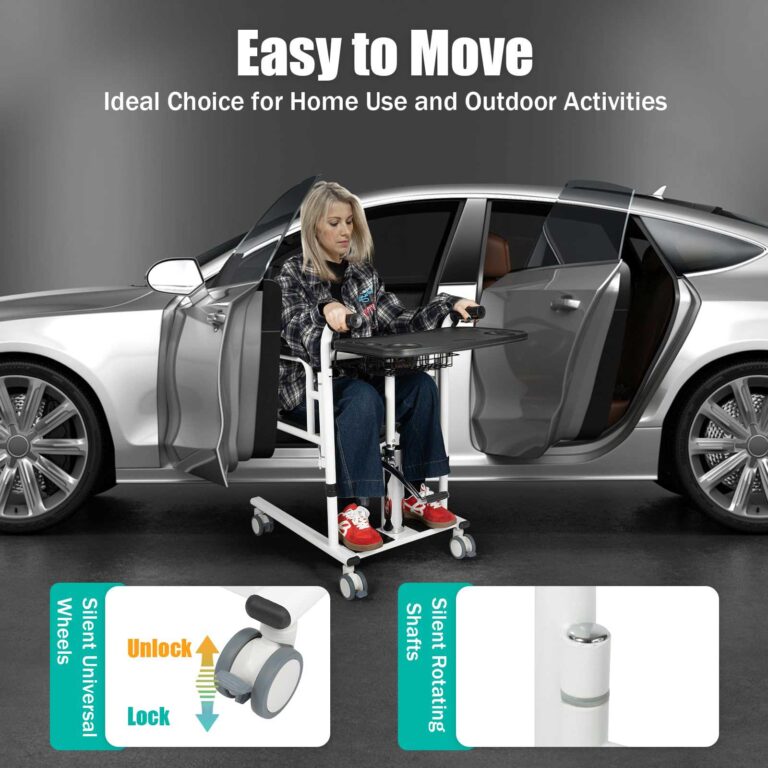
Chair to Chair Movement
Whether transferring from a recliner to a dining chair or moving between different seating arrangements, manual transfer chairs simplify these transitions. The chairs’ compact size and maneuverability ensure they can fit into tight spaces, while their stability ensures safety during the transfer process.
For example, someone recovering from surgery might use a transfer chair to move comfortably between their favorite armchair and a kitchen stool for meals.
Short-distance transportation within homes or healthcare facilities
Manual transfer chairs are extensively used for short-distance transportation within homes or healthcare facilities. This is particularly beneficial for individuals who may not need full-time wheelchair support but still require help moving between rooms, such as from the bedroom to the living area or bathroom.
For example, elderly individuals recovering from surgery or those with limited mobility due to temporary conditions can use manual transfer chairs to maintain an active lifestyle within their immediate environment.
The compact design of manual transfer chairs makes them ideal for navigating smaller spaces, ensuring that users can move comfortably and safely without requiring significant physical effort from caregivers.
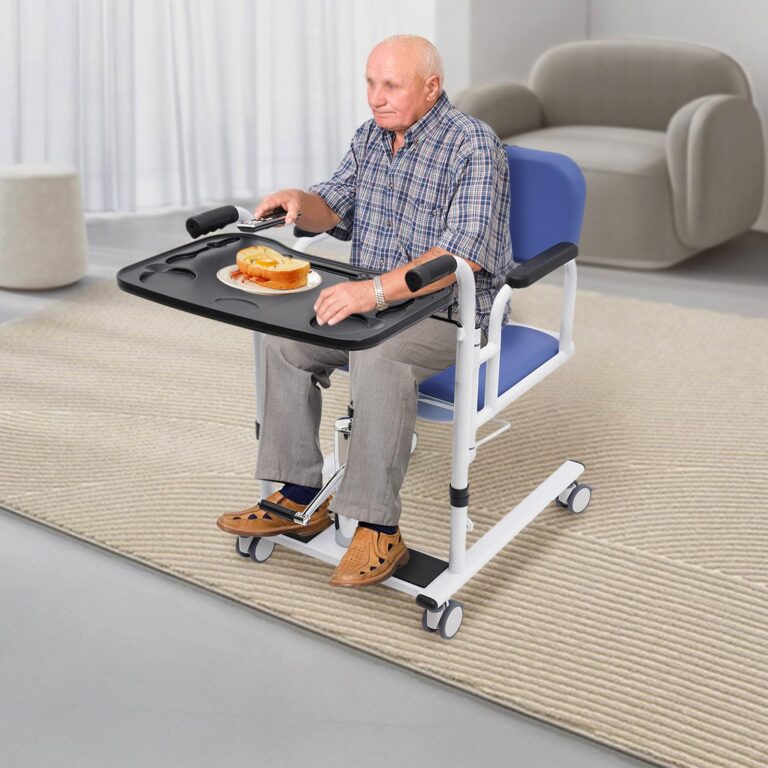
Temporary mobility assistance during recovery periods
Manual transfer chairs provide temporary mobility assistance during recovery periods. Whether it’s after an injury, surgery, or illness, patients often experience phases where walking independently is challenging.
Manual transfer chairs bridge this gap by offering a reliable means of mobility until the individual regains sufficient strength or stability to walk unaided.
For instance, someone recovering from knee replacement surgery might rely on a transfer chair to participate in physical therapy sessions or perform daily activities while minimizing strain on the healing joint.
Additionally, manual transfer chairs are engineered with features that enhance usability and convenience. Many models come equipped with adjustable arms, swivel seats, and lightweight frames, making transfers into and out of the chair easier for both the user and any assisting personnel.
These thoughtful designs contribute to a smoother transition process, reducing the risk of injury during transfers and promoting confidence.
Manual transfer chair Advantages
Manual transfer chairs offer several distinct advantages that make them an appealing choice for individuals and caregivers seeking reliable mobility assistance. Below is a more detailed exploration of these benefits:

1. Cost-effective: Generally less expensive than electric alternatives
One of the most significant advantages of manual transfer chairs is their affordability. Compared to electric transfer chair, which often come with advanced technology and complex systems, manual transfer chairs are generally less expensive to purchase.
This makes them an accessible option for those on a budget or for facilities needing multiple units.
Additionally, the lower initial cost can be particularly beneficial for users who may only require the chair temporarily.
2. Lightweight and Portable: Easy to move and store
Manual transfer chairs are typically designed to be lightweight and portable, making them easy to move and store. This feature is crucial for users who need to transport the chair frequently, such as when traveling or visiting different locations.
Many transfer chair models are constructed from materials like aluminum, which ensures durability without adding unnecessary weight. Furthermore, the compact design allows for convenient storage in small spaces, ensuring that the chair does not become an obstacle when not in use.
3. Simple Maintenance: Fewer mechanical parts mean less can go wrong
Another key advantage of manual transfer chairs is their simplicity in terms of maintenance. With fewer mechanical parts compared to electric models, there are fewer components that can malfunction or require repair.
This reduces the likelihood of unexpected breakdowns and minimizes maintenance costs over time. Routine upkeep usually involves basic tasks such as cleaning, lubricating moving parts, and checking for wear and tear.
The straightforward nature of these manual transfer chairs also means that most issues can be addressed easily by the user or caregiver without the need for specialized technical knowledge.

4. Versatile: Suitable for various home and clinical settings
A manual transfer chair can be easily adapted to a wide range of settings, whether assisting individuals in their homes or being utilized in professional healthcare facilities such as hospitals, clinics, or rehabilitation centers. Its design allows for smooth transfers across different surfaces and heights, accommodating various needs depending on the user’s physical condition.
5. No power requirements: Can be used anywhere without electricity
Another significant advantage is that it requires no power to operate. Unlike electric lift chairs or powered mobility aids, a manual transfer chair does not rely on electricity or batteries, which means it can be used anywhere at any time without worrying about charging or access to electrical outlets.
This feature is particularly beneficial during emergencies or in situations where power sources may not be readily available. Additionally, the absence of electronic components often makes manual transfer chairs more durable and less prone to mechanical failures, reducing maintenance costs over time.
Furthermore, because these chairs do not require electricity, they tend to be lighter and more portable compared to their motorized counterparts. This portability allows caregivers and users to move the chair between locations with ease, enhancing convenience and flexibility in daily routines.
Whether transferring someone from a bed to a wheelchair or helping them navigate through narrow spaces within the home, a manual transfer chair proves to be an invaluable tool for promoting independence and improving quality of life.
In summary, the combination of versatility and the lack of power requirements makes manual transfer chairs a practical and reliable option for those needing assistance with mobility. They cater to diverse environments while ensuring consistent usability regardless of external conditions.
Manual Transfer Chair Considerations
When considering the use of a manual transfer chair, it is essential to evaluate several key factors that can impact both the caregiver and the patient.
Physical demands: Requires caregiver strength and proper training
The operation of a manual transfer chair places significant physical demands on the caregiver. This includes the need for sufficient strength to lift, move, and position the patient safely.
Caregivers must also undergo proper training to ensure they use correct techniques, which minimizes the risk of injury to both themselves and the patient. Without adequate preparation, there is a higher likelihood of strain or improper handling.
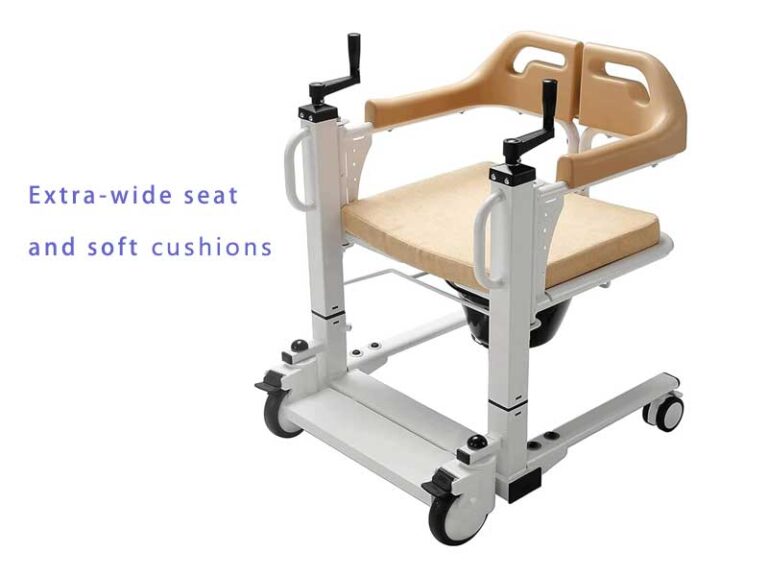
Weight limitations: May not be suitable for very heavy patients
It is important to recognize that manual transfer chairs may not be suitable for very heavy patients. Each chair has specific weight capacity limits, and exceeding these can compromise safety and lead to equipment failure.
Caregivers should carefully assess the weight requirements and choose appropriate assistive devices when necessary to accommodate heavier individuals.
Tips of choosing a suitable manual transfer chair:
Manual transfer chairs do have a weight capacity limit, typically 250–300 lbs (113–136 kg), which varies depending on the model and manufacturer. Most these chairs are designed for average-sized adults and are commonly used in home care, hospitals, and clinics.
Heavy-Duty Transfer Chairs or Bariatric Transfer Chairs can be good options for larger people or bariatric patients, they offer greater weight capacity: Usually 400–600 lbs (181–272 kg), and sometimes more. Also, they are equipped with reinforced frame, wider seat, and stronger wheels.
Caregiver fatigue: Can be physically demanding for frequent use
Frequent use of a manual transfer chair can be physically exhausting for caregivers. Repeated lifting and moving tasks over extended periods may result in fatigue, which can impair judgment and increase the risk of accidents. To mitigate this issue, caregivers might benefit from scheduled breaks, ergonomic tools, or even team-based approaches where multiple people share the workload.
Skill requirement: Caregivers need proper training for safe operation
Safe operation of a manual transfer chair requires specific skills and knowledge. Caregivers must receive comprehensive training to understand how to properly adjust the chair, secure the patient, and navigate different environments such as uneven surfaces or tight spaces. Additionally, understanding emergency procedures is crucial in case unexpected situations arise during transfers.

A manual transfer chair serves as an essential tool for enhancing patient safety and comfort while reducing the physical strain on caregivers during patient transfers. The choice between manual and electric models typically depends on budget, frequency of use, and the specific needs of both the patient and caregiver.
If you are interested in our manual transfer machine, you can contact Ageally, and we will provide you with mobility aids and solutions that meet the local market.

